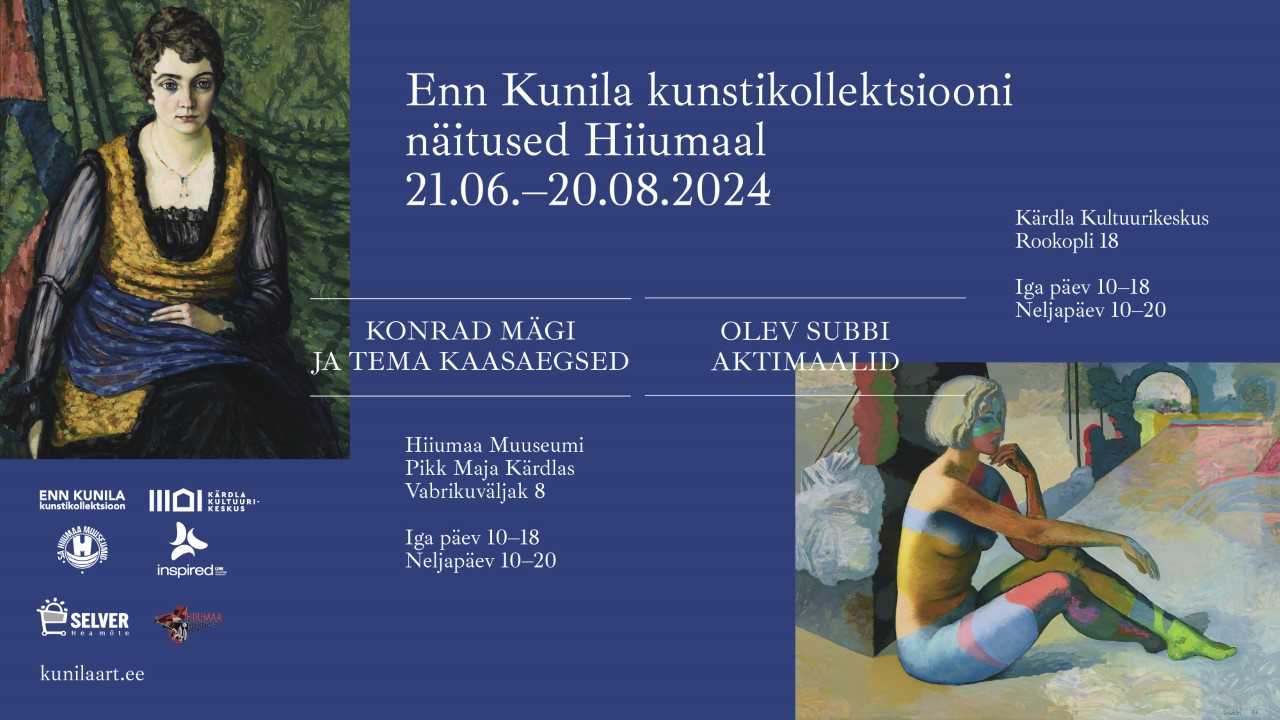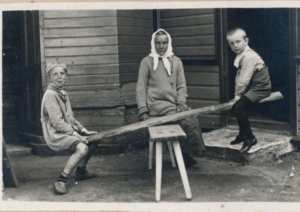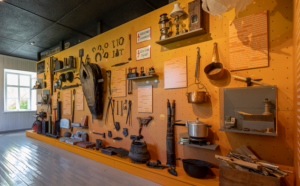Konrad Mägi and His Peers – Exhibitions of the Enn Kunila Art Collection in Hiiumaa

The year 2024 is dedicated to art in Hiiumaa.
From the Enn Kunila Art Collection there will be held two exhibitions in Kärdla: Konrad Mägi and His Peers in the Long House of the Hiiumaa Museum and Olev Subbi’s Nudes in the Cultural Centre of Kärdla.
At the exhibition Konrad Mägi and His Peers are displayed works by Konrad Mägi (1878–1925) and his peers, i.e. artists who were active around the same time as Mägi and had a similar life experience. They were all born in the second half of the 19th century, when the Estonian national culture was beginning to establish its course, and they evolved into the first generation of modernists, who focussed on the intrinsic values of painting, primarily colour.
They made joint efforts to develop the local art scene, but were at the same time truly open to international art. They travelled a lot, bringing back not only impressions of art, but newly discovered motifs, too. There is a closeness to nature and a yearning for harmony in their perception of life, but the more radical avant-garde trends remained quite alien and distant to them.
They were linked through personal connections ranging from close friendships to teacher-student relationships. Together, they laid the foundation for the history of Estonian painting.
Exhibitions Konrad Mägi and His Peers and Olev Subbi’s Nudes are open from 21 June to 20 August 2024, every day 10–18, Thursdays 10–20.


The Beauty and Charm of Hiiumaa Folk Costumes

Cordouan’s Glow at Tahkuna Lighthouse
Photos and installation by Indrek Laos and Jean-François Richon 01.05 – 30.09.2025 Lighthouse Information Day and 150th Anniversary Event: 26.07.2025 Lighthouses are prominent monuments in the heritage environment of Hiiumaa *. Yet we know surprisingly little about the origin and history of these historical jewels. The 150th anniversary of the lighthouse’s first lighting is a great opportunity to explore the fascinating history of this facility, highlighting its importance in both a local and global context, as well as its surprising connection to the Cordouan Lighthouse in France, which is included in the UNESCO World Heritage List. The exhibition is divided into planchettes that span the nine floors of the Tahkuna Lighthouse. It presents photographs taken during the Cordouan Lighthouse expedition in June 2024, complemented by historical drawings and explanatory texts. The photo installation juxtaposes the analogous functional levels of the Cordouan and Tahkuna lighthouses, telling a captivating story of the historical cultural ties between the two. Thus, the Tahkuna Lighthouse is not merely a navigational marker ensuring maritime safety, but also an opportunity to reflect on the values of freedom, equality, fraternity, and other principles of a democratic social order, as enshrined in the UN Universal Declaration of Human Rights:…

Konrad Mägi and His Peers – Exhibitions of the Enn Kunila Art Collection in Hiiumaa
The year 2024 is dedicated to art in Hiiumaa. From the Enn Kunila Art Collection there will be held two exhibitions in Kärdla: Konrad Mägi and His Peers in the Long House of the Hiiumaa Museum and Olev Subbi’s Nudes in the Cultural Centre of Kärdla. At the exhibition Konrad Mägi and His Peers are displayed works by Konrad Mägi (1878–1925) and his peers, i.e. artists who were active around the same time as Mägi and had a similar life experience. They were all born in the second half of the 19th century, when the Estonian national culture was beginning to establish its course, and they evolved into the first generation of modernists, who focussed on the intrinsic values of painting, primarily colour. They made joint efforts to develop the local art scene, but were at the same time truly open to international art. They travelled a lot, bringing back not only impressions of art, but newly discovered motifs, too. There is a closeness to nature and a yearning for harmony in their perception of life, but the more radical avant-garde trends remained quite alien and distant to them. They were linked through personal connections ranging from close friendships to…

The Beauty of Seats
Exhibition: March 1st to June 13th 2024. The Beauty of Seats Sitting is said to be the body’s state of rest. Any surface or object can serve as a seat – be it a stone or stump, a log, a plank, or a box. In order for sitting to feel comfortable and practical, humans have invented and produced many different types of seats. Hiiumaa Museum’s collection includes several pieces of furniture designed for sitting. This exhibition primarily showcases homemade benches and rocking chairs. Some examples of factory-made work have also found their place in the display. To create diversity, we have also included chairs typical of one era or another. Unfortunately, the names of many furniture makers are no longer known, but their craftsmanship remains a source of joy for us. THE LONG HOUSE

Kaljo Põllu’s Archetypes or In Search of Primal Elements
Exhibition: April 12th to June 16th 2024. Kaljo Põllu was born in 1934 in Kopa village in Hiiumaa. He entered the Estonian art scene in 1962 as a glass artist but soon became known for his powerful graphic series on Finno-Ugric themes, such as The Primaeval Ones, Illumination, and others. Between 1998 and 2001, Kaljo Põllu completed an entire series of paintings based on various signs and ornaments. These symbols and images have accompanied humankind since the beginning of time. And, most importantly, such ornaments can be found in the cultures of many peoples. This is undoubtedly a particularly colourful series, which in a way summarises the artist’s quest for the origins of folk culture. Each work is accompanied by a photo collage that explores or expands on its meaning. It is this very exhibition that confirms that the artist is kind of a collector of visual folk culture, as Riin Kübarsepp once described him. THE LONG HOUSE

Life on the island. Fire, water, air, earth
The Kassari Museum House, a branch of the Hiiumaa Museums, introduces the daily work and activities of inhabitants of Hiiumaa, and the heritage of the natives of the island who lived in harmony with nature through the four primal elements. The permanent exhibition, Life on the island. Fire, water, air, earth, is located in the limestone mansion of the Kassari manor. Past and present are not placed on the timeline, but the rooms of the museum building are divided into the four primal elements, and the objects and stories of the exhibition focus on the simple but important skills, knowledge, and experiences of the island’s native people. The natives have lived on their island together with the surrounding sea for millennia. They have had their own dialogue with nature, which was passed down from generation to generation and became the cultural heritage of Hiiumaa. Hiiumaa, together with the other islands of Western Estonia, belongs to the UNESCO program Man and the Biosphere. This means that the traditional interaction between nature and man is valued and preserved through education, culture, and science. There is also a souvenir and book shop in the Kassari Museum House, where you can find a wide…